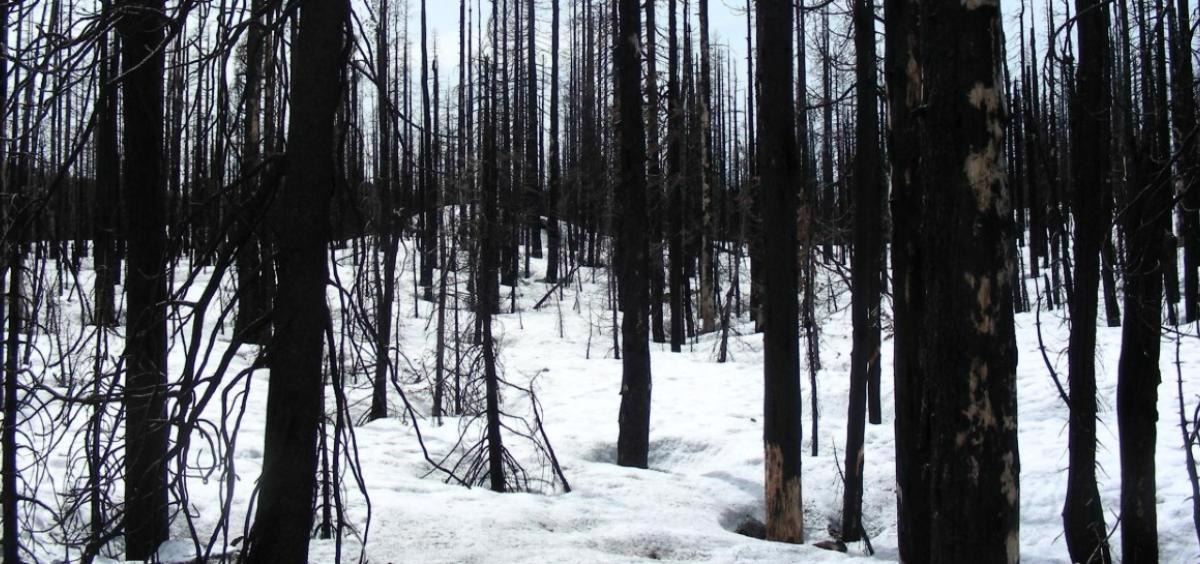Reviewed by Alex SmithNov 23 2021
A study by researchers at Oregon State University (OSU) and the University of Nevada, Reno states that a key factor in the return of vegetation would depend on how much and how long a severely burned Pacific Northwest mountain landscape remains covered in winter snow.

Image Credit: Oregon State University.
The findings have been reported in the Journal of Geophysical Research: Biogeosciences, and are crucial because there is an increase in the frequency and severity of wildfires in the Northwest. The blazes carry numerous short- and long-term effects, and the length of those effects is connected with the re-establishment and recovery of vegetation.
As wildfire activity continues to increase and intensify in the Northwest, understanding what shapes revegetation on severely burned forested landscapes is vital for guiding management decisions.
Kevin Bladon, Researcher, College of Forestry, Oregon State University
Postfire revegetation in the forested mountainous areas of the Pacific Northwest is a complex puzzle, the researchers say, but snow cover is a critical element particularly in the Cascade Range in Oregon and Washington. Over 80% of wildfires in the western United States from 2000 to 2012 burned within a seasonal snow zone, a time frame that corresponds with the years studied.
“Snow matters to regrowing vegetation following fire, and with double impacts of declining snowpacks and increasing wildfires it is critical that we understand how these changes are affecting Pacific Northwest forests,” said Anne Nolin, who led the study, which began while she was a researcher at Oregon State; she is now a geography professor at the University of Nevada, Reno.
Nolin and Bladon partnered with Andrew Wilson, a graduate research assistant in OSU’s College of Earth, Ocean, and Atmospheric Sciences, on the NASA-sponsored study that included before-and-after vegetation analyses for 24 high-severity wildfires. The fires happened across a 10-year period among four separate subregions of the Columbia River Basin.
At approximately 260,000 square miles, the Columbia Basin is the largest watershed in the Pacific Northwest. It comprises a range of fire-prone landscapes that have seen nearly 900 fires since 2010, serves as important habitat for over 700 species, and is a source for water in seven U.S. states.
There are many short- and long-term effects from the forest fires that are hitting the West more frequently and more severely than they ever have, including erosion, debris flows, and water quality issues, all of which can be bad for aquatic ecosystems and downstream community water supply.
Kevin Bladon, Researcher, College of Forestry, Oregon State University
“The persistence of these impacts is mitigated by postfire revegetation, which depends on a complex network of drivers whose connections haven’t been well studied. Climate change projections and changing wildfire regimes have added to concerns about postfire regeneration,” Bladon added.
The research revealed that summer precipitation consistently was the most vital variable triggering postfire revegetation throughout all four of the subregions analyzed, said Bladon, who has been exploring wildfire’s effects on water quality for approximately 20 years.
Variables such as prefire forest composition, snow cover frequency, and elevation were also established to be considerably effective for revegetation in the Washington and Oregon Cascades and the western Montana Rockies.
Given the current trends of lower snowpacks, increasing wildfire activity, and earlier snow disappearance dates across the Northwest, forests will probably undergo drought conditions more often than they have in the past, which will have an impact on postfire vegetation recovery, the scientists expressed.
“Many of the forested, mountain landscapes in the Northwest are changing at an unprecedented rate, largely because the regional climate regime is changing,” Bladon said. “Forest responses to climate change are also being driven by shifts in the precipitation that influence soil water storage and groundwater.”
Climate change has already raised the winter precipitation percentage which condenses as rain rather than snow, decreased the spring snow-water equivalent—a metric for the amount of water snow holds—and caused snowmelt to start earlier in the spring than it used to, Nolin said. Pacific Northwest snowpacks have witnessed the extreme declines of any seasonal snow region in the West.
And wildfire season length in the western U.S. overall has increased by roughly 25 days in recent decades, including a massive increase in the Northwest from the mid-1970s, when it was 23 days, to 116 days in the early 2000s. That’s attributable mainly to warmer temperatures and drier conditions in the spring and summer.
Kevin Bladon, Researcher, College of Forestry, Oregon State University
With current climate change forecasts, snowpacks’ role in helping revegetation will become progressively significant across the West, Nolin said. Moreover, where snowpacks have weakened, there probably will be ecosystem transitions that resemble a shift from forest to non-forest, from evergreen to deciduous vegetation.
Bladon suggests fire can be looked at as an opportunity for forests to reassemble into ecosystems better suited to survive warmer winters, longer fire seasons, and more drought stress.
That’s at the heart of the challenge of reconciling a changing climate’s ecological forces with postfire forest management goals—the goals are often oriented toward re-establishing forests as they existed before the fire. But with shifting climate trends in the region, that might not be the most adaptive path forward for forested landscapes.
Kevin Bladon, Researcher, College of Forestry, Oregon State University
Journal Reference:
Wilson, A.C., et al. (2021) Assessing the Role of Snow Cover for Post-Wildfire Revegetation Across the Pacific Northwest. Journal of Geophysical Research: Biogeosciences. doi.org/10.1029/2021JG006465.